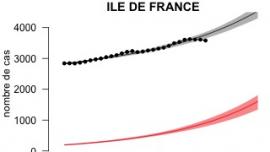Publication
2022

A minimal yet flexible likelihood framework to assess correlated evolution
An evolutionary process is reflected in the sequence of changes of any trait (e.g. mor-
phological, molecular) through time . Yet, a better understanding of evolution would be
procured by characterizing correlated evolution, or when two or more evolutionary pro-
cesses interact. Many previously developed parametric methods often require significant
computing time as they rely on the estimation of many parameters. Here we propose
a minimal likelihood framework modelling the joint evolution of two traits on a known
phylogenetic tree. The type and strength of correlated evolution is characterized by
few parameters tuning mutation rates of each trait and interdependencies between these
rates. The framework can be applied to study any discrete trait or character ranging
from nucleotide substitution to gain or loss of a biological function. More specifically,
it can be used to 1) test for independence between two evolutionary processes, 2) iden-
tify the type of interaction between them and 3) estimate parameter values of the most
likely model of interaction. In its current implementation, the method takes as input
a phylogenetic tree together with mapped discrete evolutionary events on it and then
maximizes the likelihood for one or several chosen scenarios. The strengths and limits
of the method, as well as its relative power when compared to a few other methods, are
assessed using both simulations and data from 16S rRNA sequences in a sample of 54
γ-enterobacteria. We show that even with datasets of fewer than 100 species, the method
performs well in parameter estimation and in the selection of evolutionary scenario.










